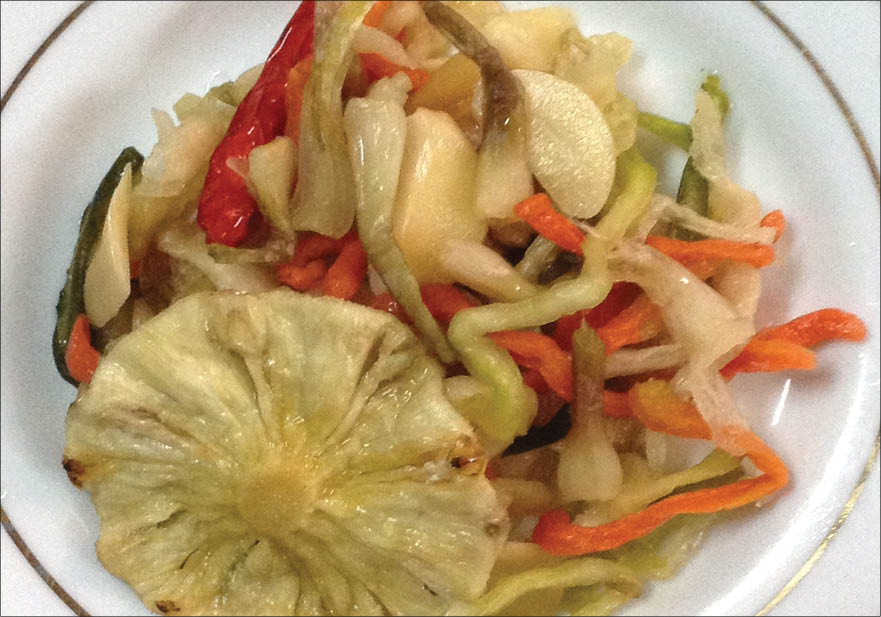
The finished product is crisp, delicious and easy to eat
Most Hue people have a jar of pickled vegetables for Tet. Hue mothers usually pass on to their daughters the way to take care of their family. It can be simple as a homely meal or more complicated as a feast for Tet holiday or death anniversaries of relatives. Like most of the 8X generation, I was "trained" with the basics on how to cook some dishes in the kitchen and host a cozy family dinner.
With the pickled vegetables dish, my mother taught me how to trim the vegetables, dry them, and cook the fish sauce. In my time, paring knives were rare, so if you had a steady hand to trim the vegetables and good taste buds to make good fish sauce, then you had succeeded.
Later on, I picked up some more tips from friends and cookbooks to enrich my skill set. But when I tasted my friend’s mother’s pickled vegetables, I knew I had to become Auntie’s "apprentice" and learn her techniques. Auntie said: "You don’t need to “learn” anything, just watch me a few times and you’ll know how to make it. You already have basic skills so you needn’t worry.” However, I still felt anxious. I went over to her house the day right after. I was worried that one day Auntie would move to Saigon to be with her children and grandchildren; then I would no longer have the chance to learn from her.
Auntie told me that her mother was also a rather skilled cook within the large family clan. Therefore, all the women in the family can make this dish. Each holiday season, she will make a big batch of pickled vegetables for her siblings and cousins. She even takes order and ship pickled vegetables to customers in Saigon.
Ingredients like carrots, cucumbers, papaya, garlic, and so on are bought from places such as Da Lat (Lam Dong), Ly Son island (Quang Ngai) and from Hue. Instead of trimmed into intricate shapes, the vegetables are julienned and dried on sunny days. When they have been dried, Auntie would wrap them in newspapers and put them in a plastic bag. But how does she prepare the pineapple slices so that they do not go sour or ferment in the pickle juice? This requires a secret technique. She slices the pineapple into round slices (leaving the pineapple whole), squeezes the juice out, and dries carefully on hot coals until dried.
Next, the fish sauce is cooked with sugar and let settle for 10 to 15 days. Auntie told me not to use ruoc (a type of small shrimp) sauce as it is high in protein and can create an odor. Seasoning the fish sauce depends on the culinary talent of each person to make the perfect sauce – not too salty, has a nice smell, sweet taste and refreshing touch. The vegetables are washed with salt water, drained and put into the jar. Pour in the sauce until the vegetables are submerged in the sauce. After 10 to 15 days, drain the sauce and pour in a fresh batch of fish sauce. The dish will be ready five to seven days later.
The finished product is crisp, delicious and easy to eat. My little boy is less than three years old, but every morning he would remind me to cook porridge to eat with the pickled vegetables. His older brother keeps asking “Oh is it the New Year already, mom?” “Of course, it’s the New Year’s dish!”
Often, we would eat the julienned pickled vegetables with glutinous rice and banh chung, banh u (types of rice cake). Others wait until Tet to eat these dishes but we like to eat them now to usher Tet to come quickly. It also allows us to fully enjoy the holiday dishes before the excessive amount of food on Tet.
Thanks to Auntie, I now know another way to make pickled vegetables. It’s a pity I don’t have a daughter to pass it on, so that’s why I’m writing it all out to share with other mothers and daughters who love to cook.
Story and photo: Linh Tue